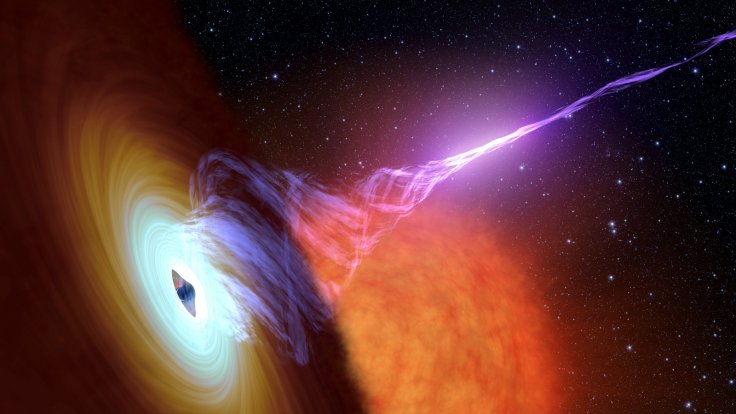Astronomers were able to capture a video of the powerful jets of stellar material emitted by a distant black hole. According to the astronomers, the materials within the jets came from a nearby star that the black hole is consuming.
The astronomers were able to conduct their observations using the data collected by the Chandra X-ray Observatory, a powerful space telescope launched by NASA on July 23, 1999. They presented their findings in a study published in The Astrophysical Journal Letters.

Devouring a Companion Star
For their study, the astronomers focused on a stellar mass black hole known as MAXI J1820+070. It is about eight times as massive as the Sun and is being orbited by a companion star.
According to the astronomers, as the star completes its orbit, its surface materials get stripped away by the black hole. These materials fall into the accretion disk, which is the swirling disk of matter around the black hole. The swirling motion of the disk heats up the materials inside it.
Black Hole's Accretion Disk
In certain cases, the cosmic materials escape the accretion disk through jets that shoot off into space. This is exactly what happened to MAXI J1820+070 when astronomers detected two jets of cosmic materials shooting off from the northern and southern regions of the black hole.
As noted by the astronomers, the jets moved at near light speeds. While one of the jets headed deep into space, the other one moved towards Earth's directions. According to the astronomers, the jet did not pose a threat to Earth since MAXI J1820+070 is about 10,000 light-years away from the planet's neighborhood.
Observing The Black Hole's Jets
Through observations made by the Chandra X-ray Observatory in November of 2018 and in February, May and June last year, the astronomers were able to create a video showing the jets of the black hole. Through the space telescope's X-ray imaging capabilities, the bright jets of material can be seen moving away from the black hole in opposite directions.
"We report the discovery of X-ray sources associated with the radio jets moving at relativistic velocities with a possible deceleration at late times," the astronomers explained. "The broadband spectra of the jets are consistent with synchrotron radiation from particles accelerated up to very high energies by shocks produced by the jets interacting with the interstellar medium."









